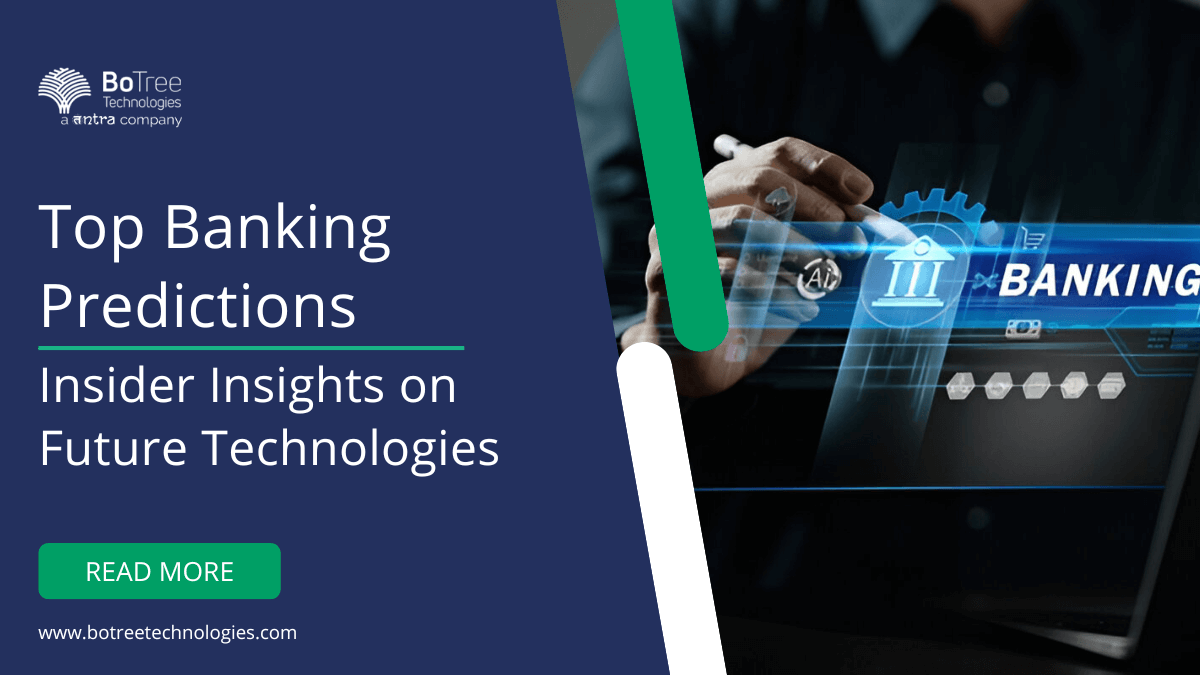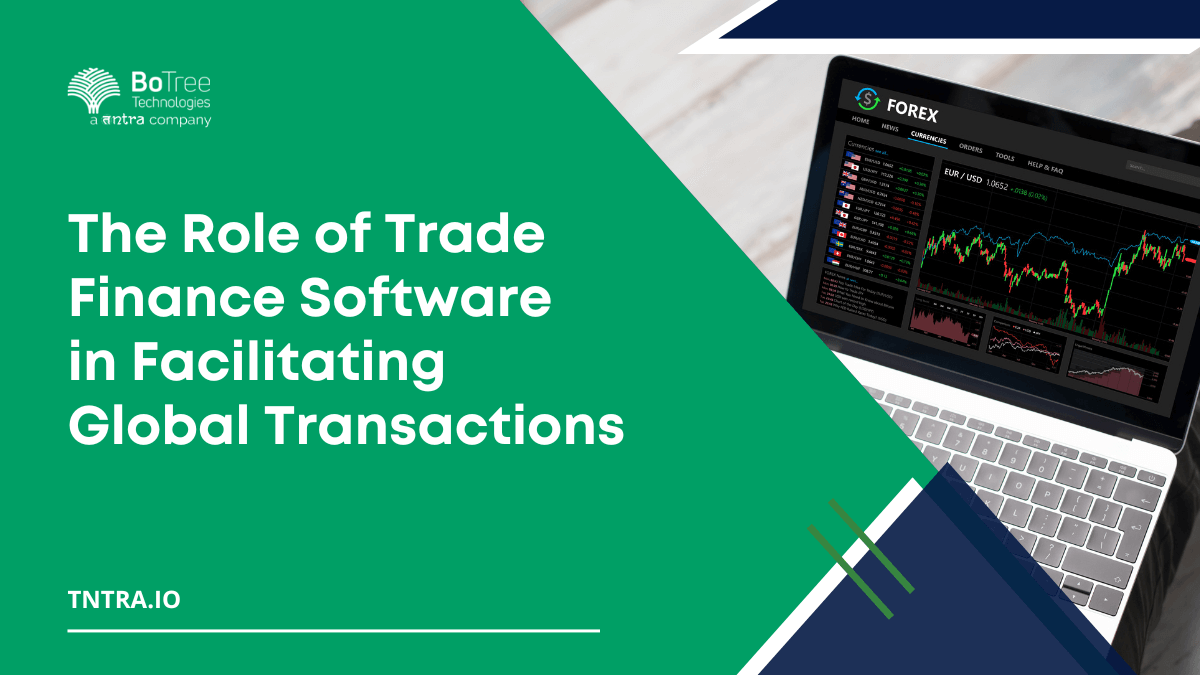
Top Banking Predictions for 2025: Insider Insights on Future Technologies
The digital transformation of banking is picking up speed, with AI, blockchain, open banking, and embedded finance at the forefront. As banking trends of 2025 are revealed, hyperautomation, biometric authentication, and RegTech will reshape security and compliance. Cloud computing and data analytics will make banks more intelligent with better decision-making, while fintech software development firms fuel next-generation innovations. To remain competitive, banks have to adopt fintech app development solutions and digital transformation solutions that optimize efficiency, security, and customer experience. The future of banking is digital—are you prepared? Continue reading to learn more.
Shocking Changes in Digital Banking: Insider Insights for 2025 Uncovered
The evolution of banking from lengthy queues and passbook updates to mobile apps that allow fund transfers with a click of a button is nothing short of impressive. But the idea that we’ve reached peak digital banking? The banking industry is at the beginning of its digital transformation journey, and the banking trends in 2025 indicate that we are on the verge of a brand new epoch in finance that will prioritize productivity, safety, and intelligence.
To this end, there are not one but two major trends that affect traditional banking today: the rise of fintechs, the changing behavior of consumers, and disruptive technologies are threatening to take away traditional customers and replace old banking models. AI, blockchain, open banking, and embedded finance are among several innovations paving the way for the future of banking technology. In this article, we will be discussing the banking industry trends, the technologies driving this acceleration, and the overall digital transformation in banking.
Key Trends in Digital Banking for 2025
Banking trends 2025 point to a world of smarter, more secure financial services that are embedded in every aspect of our daily lives. Let’s lean into the top banking predictions 2025 driving this transformation.
1. AI in Banking: The Era of Smart Finance
AI services are not just future-forward ideas—they are the new reality of banking. Artificial intelligence (AI) services are revolutionizing the banking industry, transforming how financial institutions operate, serve customers, and drive innovation. Banks are no longer what they used to be—they’re becoming smarter, faster, and more customer-centric thanks to the power of AI.
- Personalized Banking: These innovative tools provide end-users with financial advice tailored to their needs.
- Fraud Prevention: Machine learning models can identify suspicious behavior in real time, preventing fraud before it occurs.
- Credit Risk Assessment: AI assesses loan applications more accurately by eliminating human bias.
2. Blockchain Technology: More Than Just Crypto
While many people may think of Bitcoin when contemplating blockchain, the true promise of this technology for banking extends beyond cryptocurrency.
- Secure Transactions: By its likeness of providing an immutable ledger, blockchain contributes to transparency and reduces fraud.
- Cross-Border Payments: Blockchain allows international transactions to be cheap and fast.
- Smart contracts: Enable agreements to be made without the need for intermediaries, reducing paperwork and costs.
3. Open Banking: Customers in Control
With open banking, customers are not tied to a single financial institution anymore. They continue to have access to better financial products by sharing data securely via APIs with third-party providers.
- Customized Financial Insights: Apps consolidate financial data across banks and offer smarter spending tools.
- Competitive Loan Offers: Customers can compare and select the most competitive loan or credit card according to their financial profile with open banking.
4. Embedded Finance: Banking Without the Bank
Imagine getting a loan directly on an e-commerce site or purchasing insurance while booking a flight. That’s embedded finance — putting banking services inside non-banking platforms.
- Buy Now, Pay Later (BNPL): Mostly used with e-commerce platforms, BNPL allows users to break payments into installments.
- Retail and travel partnerships: Embedded banking enables brands to sell financial products without having a banking license.
Technologies Driving Banking Transformation
The drive to keep customers loyal has prompted banks to adopt technologies that also reduce costs without compromising the safety or reliability of services offered.
1. Hyperautomation: The Rise of Smart Workflows
Banks have automated complex processes to control costs and improve efficiency. Hyperautomation is a combination of AI, machine learning, and Robotic Process Automation (RPA) and is meant to:
- Speed up loan approvals
- Automate compliance checks
- Utilize AI chatbots to improve customer service
2. Low-Code Development: Faster Innovation
Conventional banking IT departments generally have difficulties with legacy systems. These low-code and no-code development tools allow banks to develop applications with minimal hand-coded computer programming that promotes rapid innovation and adaptive transformation.
- Drag-and-Drop Interfaces: Build apps quickly without an extensive programming background.
- Faster Time to Market: Launch new banking features in weeks, not months.
3. RegTech: Compliance Made Easy
As the world shapes up, with increased financial regulations and scrutiny, RegTech (Regulatory Technology) is enabling the financial system to remain compliant without signing off on mountains of paperwork.
- Automated Risk Management: AI monitors transactions for compliance breaches.
- Real-Time Reporting: Reduces the time and cost of regulatory filings.
4. Biometric Authentication: A Password-Free Future
As cyber threats proliferate, yoga poses and other traditional passwords won’t do. Biometric authentication (fingerprint scans, facial recognition, voice ID) has added security to banking.
Predictions for the Future of Banking
Further advances in banking, by way of AI, cloud computing, and data analytics, are set to unfold over the coming years.
1. Generative AI: The Next Step in Personalization
Generative AI as a catalyst for evolving AI-driven banking: hyper-personalization of customer interactions (e.g., chatbots), hyper-relevant fraud detections, and even AI-generated financial statements.
2. Cloud Computing: The End of Legacy Systems
Cloud computing has attracted banks, allowing them to be more scalable, build securely and reduce infrastructure costs. Cloud-native banks will gain an agility and innovation edge.
3. Data Analytics: Smarter Decision-Making
Banks gather huge quantities of data, yet data analytics transform it into business insights that help:
- Better fraud detection
- Finding: More accurate credit risk assessments
- Providing Better Customer Experience with Predictive Analytics
How Fintech Software Development Companies Are Leading the Charge
The future of the banking world isn’t large institutions, but a fintech software development company that will pave the way for next-gen financial solutions.
1. Fintech App Development Solutions
Fintech app development solutions are changing the banking experience, from AI-powered personal finance applications to blockchain-based payment systems.
2. Enterprise Software Development Services
Providing services around enterprise software development is not enough; banks are working toward improving their core banking systems as well as customer interaction and data security.
3. Digital Transformation Solutions
Banks are collaborating with digital transformation solutions providers to stay abreast of newer trends to:
- Automate operations
- Enhance cybersecurity
- Implement AI-based customer service
The Ultimate Conclusion: Digital Transformation in Banking is Here to Stay
Whether it’s building blockchain-based remittance systems or AI-powered fraud detection tools, software engineering services are central to banking innovation.
Digital transformation in banking is not a fad — it’s the future. From AI to blockchain, to open banking and embedded finance, well, banks that embrace these innovations will prosper, while those that are resistant to change will become obsolete. For financial institutions looking to stay ahead, following a comprehensive Digital Transformation Guide is essential to navigating this shift successfully.
With the assistance of a software development company and investment in fintech app development services, banks can design smarter, more secure, and immensely personalized financial services.
So, are banks ready for 2025? Time is running out, and the future of finance is digital. Kickstart your digital banking journey today with Tntra.
Contact us! Schedule a Call Now!
FAQs
What is the future of digital transformation in banking?
The future of banking is all about speed, security, and personalization. With AI, blockchain, and embedded finance taking center stage, expect smarter, seamless, and more intuitive financial services.
What are the digital banking trends for 2025?
Think AI-driven customer experiences, blockchain-powered security, and open banking giving you more control. Add in hyperautomation and biometric authentication, and banking in 2025 will be faster and more secure than ever.
What is the most significant trend affecting the banking industry at the moment?
Right now, AI is the game-changer. From fraud detection to personalized financial advice, banks are using AI to boost efficiency and improve customer experiences like never before.
How is AI transforming customer experiences in banking?
AI-powered chatbots, personalized financial recommendations, and fraud detection systems are making banking smoother, safer, and smarter. It’s like having a 24/7 financial assistant in your pocket!
How are low-code development platforms impacting banking operations?
Low-code platforms let banks build and launch new digital services faster—no need for massive IT teams. The result? Quicker innovation and a much better customer experience.
What are the key phases of digital transformation in banking?
It starts with assessing legacy systems, then moves to cloud adoption, AI integration, and automation. The final phase? A seamless, data-driven banking experience for customers.




